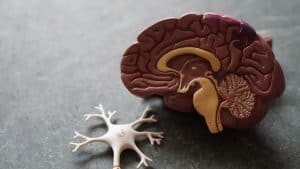
Flickering LEDs could light the way for new Alzheimer’s treatment
pharmafile | December 8, 2016 | News story | Medical Communications, Research and Development | Alzheimer's, Cognito therapeutics, mice
Research to find a potential new treatment for Alzheimer’s was hit a blow late last month, as Eli Lilly discontinued its research after its drug failed to show efficacy in a late stage trial. In an example of how quickly research moves from one hope to the next, a new form of treatment has shown a high degree of potential for shedding light on new methods of treatment of Alzheimer’s disease. The study, conducted by researchers at MIT, involved LED lights flickering at specific frequencies to determine whether this reduced the beta amyloid plaques in the visual cortex of mice. After an hour of treatment every day for seven days the mice exhibited significantly reduced plaques and free-floating amyloid.
The research hinges upon the fact that previous studies have suggested that Alzheimer’s patients have impaired gamma oscillations. The normal range of brain waves occur from 25 to 80 hertz and are thought to contribute to brain functions as basic as memory, attention and perception. The researchers then programmed a strip of LED lights to flicker at different frequencies to test the impact on mice, with the results finding that at 40 hertz the mice displayed reduced plaques. This result was not seen at other ranges that the mice were exposed to between 20 to 80 hertz.
Mice exposed at 40 hertz were found to have 67% fewer amyloid plaques compared to those mice that did not receive treatment. Additionally, the plaques that were left were 64% smaller. The treatment by frequency was also found to reduce abnormally modified Tau protein, which are a known cause of complication in Alzheimer’s.
The gamma oscillations are thought to work by stimulating microglia, the immune cells present in the brain, to remove the beta amyloid proteins.
“It’s a big ‘if,’ because so many things have been shown to work in mice, only to fail in humans,” commented lead researcher Li-Huei Tsai. “But if humans behave similarly to mice in response to this treatment, I would say the potential is just enormous, because it’s so noninvasive, and it’s so accessible.”
There is still a lot of research that needs to be done before this particular method can be determined to be viable in humans. Tsai and Ed Boyden, colleague at MIT, have begun a company, Cognito Therapeutics, in order to test the methods potential efficacy in humans.
Ben Hargreaves
Related Content

FDA accepts Eisai’s Leqembi sBLA for early AD treatment
Eisai and Biogen have announced that the US Food and Drug Administration (FDA) has accepted …

Voyager Therapeutics shares data from preclinical programmes for Alzheimer’s treatment
Voyager Therapeutics has announced new data from is two preclinical programmes targeting pathological tau for …

Eisai shares new data for Leqembi for Alzheimer’s treatment
Eisai and Biogen have announced that Eisai has shared new data for Leqembi (lecanemab-irmb) 100mg/mL …








